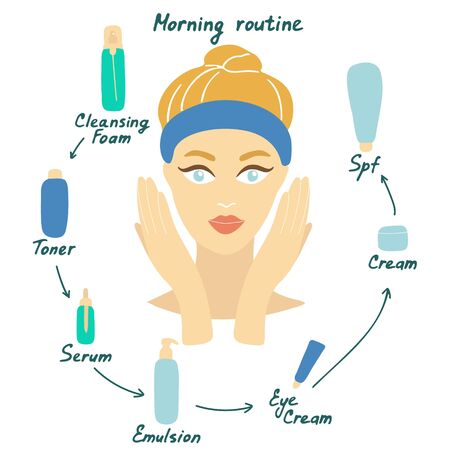1. Understanding Melasma in the UK Context
Melasma is a complex skin condition characterised by hyperpigmented patches, most commonly appearing on the face. In Britain, its prevalence and manifestation vary significantly across ethnic communities, shaped by a unique blend of sociocultural and environmental factors. Among British South Asian, Black African, Caribbean, Middle Eastern, and mixed-heritage populations, melasma is notably more common compared to individuals with lighter skin tones. This disparity is due not only to genetic predispositions but also to cultural practices, occupational exposures, and urban living conditions found throughout the UK.
The Prevalence of Melasma Across Communities
Data from UK dermatology clinics suggests that melasma disproportionately affects people with Fitzpatrick skin types III to VI, who are well represented within Britains diverse population. The incidence rates are particularly high in cities like London, Birmingham, and Manchester, where multicultural communities thrive and are exposed to both urban pollutants and fluctuating weather patterns unique to the British Isles.
Triggers and Presentation Patterns
Common triggers include hormonal changes (such as pregnancy or contraceptive use), ultraviolet (UV) radiation—even under cloudy British skies—and exposure to visible light. Additionally, traditional skincare routines and the use of certain cosmetic products within specific cultural groups can sometimes exacerbate pigmentation issues. Presentation patterns may differ: for example, while centrofacial melasma is frequent among South Asian women, malar patterns are more observed in Afro-Caribbean populations.
Sociocultural and Environmental Influences
The British context introduces particular challenges: limited sunlight may paradoxically lead some individuals to forgo sun protection, underestimating UV risk; meanwhile, environmental pollution prevalent in urban centres can contribute to oxidative stress on the skin. Sociocultural attitudes towards pigmentation—ranging from stigma to acceptance—also influence help-seeking behaviour and management outcomes. Recognising these layered influences is vital for clinicians aiming to deliver effective care tailored to Britain’s ethnically diverse population.
2. Identifying At-Risk Ethnic Groups
Understanding which ethnic groups are more prone to melasma is crucial for effective diagnosis, prevention, and treatment strategies within Britain’s diverse population. The prevalence of melasma varies notably across different communities, largely due to genetic predisposition, hormonal influences, and lifestyle factors unique to each group.
Demographic Overview: Melasma in Britain
Britain’s multi-ethnic society includes individuals of South Asian, Afro-Caribbean, Middle Eastern, East Asian, and Caucasian backgrounds. Epidemiological studies indicate that people with darker skin types (Fitzpatrick Skin Types IV-VI) are significantly more susceptible to melasma. This is particularly relevant among British residents with Indian, Pakistani, Bangladeshi, Black African, and Middle Eastern heritage.
Ethnic Susceptibility Table
| Ethnic Group | Relative Risk of Melasma | Primary Contributing Factors |
|---|---|---|
| South Asian (Indian, Pakistani, Bangladeshi) | High | Genetic predisposition; higher melanin content; cultural use of hormonal therapies |
| Afro-Caribbean & Black African | Moderate to High | Darker skin phototypes; family history; increased sun sensitivity |
| Middle Eastern & North African | Moderate to High | Genetic background; hormonal influences; sun exposure habits |
| East Asian (Chinese, Filipino, etc.) | Moderate | Sensitivity to UV exposure; possible genetic links; urban pollution exposure |
| Caucasian (White British/European) | Low | Lighter skin type offers lower baseline risk but not immunity—especially with hormonal changes or excessive sun exposure |
The Role of Genetic and Hormonal Influences
The higher prevalence of melasma among certain ethnicities is often attributed to inherited traits affecting melanin production. Additionally, hormonal fluctuations—such as those caused by pregnancy (often termed “the mask of pregnancy”), oral contraceptives, or hormone replacement therapy—are more likely to trigger melasma in genetically predisposed populations. Notably, some cultural practices related to beauty and wellness may also increase risk through the use of certain skincare products or medications.
Lifestyle and Environmental Considerations in Britain
Lifestyle factors—including occupational sun exposure (for example, outdoor work), urban pollution common in UK cities, and varying attitudes toward sun protection—further influence susceptibility. For many at-risk groups in Britain, lack of awareness about sun safety or the misconception that darker skin does not require sunscreen can contribute to the incidence and persistence of melasma.

3. Navigating Diagnosis: Cultural and Clinical Nuances
Diagnosing melasma within Britains ethnically diverse communities presents unique challenges that extend beyond the clinical setting. British healthcare professionals are increasingly aware of the need to consider both cultural and biological factors when assessing pigmentation disorders, as traditional diagnostic approaches may not always account for nuances found in patients with different skin tones and cultural backgrounds.
Understanding Clinical Presentation Across Skin Types
Melasma manifests differently depending on an individual’s skin type, which is often categorised using the Fitzpatrick scale. In darker skin phototypes—common among British Asian, Black, Middle Eastern, and mixed-heritage communities—melasma may appear as more diffuse or irregular patches, sometimes leading to misdiagnosis or confusion with other pigmentary conditions such as post-inflammatory hyperpigmentation. This underscores the importance of tailored diagnostic criteria and familiarity with how melasma presents across various ethnic groups.
Cultural Sensitivity in Patient Assessment
Effective diagnosis goes beyond visual inspection; it requires an understanding of a patient’s lived experience. Culturally sensitive consultations can uncover lifestyle factors, cosmetic practices, and even traditional remedies that might contribute to the condition or affect its appearance. For instance, some individuals may use skin-lightening products or cover pigmentation with makeup, potentially masking symptoms during examination. Taking time to build rapport and trust is crucial, especially where language barriers or stigma about visible skin differences exist.
The Role of Communication
Open communication is essential for accurate diagnosis. Healthcare practitioners in Britain benefit from using clear, jargon-free language and providing interpreters where necessary. It is also important to validate concerns about appearance and address any myths or misconceptions regarding melasma and its causes within specific cultural groups.
Summary: Adapting Diagnostic Practice
In summary, diagnosing melasma among Britain’s diverse populations demands both clinical expertise and cultural awareness. By embracing a patient-centred approach that respects individual backgrounds and experiences, clinicians can improve diagnostic accuracy while fostering trust and engagement in care pathways. This foundation is key for successful long-term management of melasma in multicultural settings.
4. Tailored Treatment Options
When managing melasma among Britain’s diverse ethnic communities, it is crucial to acknowledge that a one-size-fits-all approach is rarely effective. Instead, treatment plans should be carefully adapted to individual skin types, levels of pigmentation, and personal or cultural preferences. Below, we outline the main evidence-based treatment modalities – topical, oral, and procedural – alongside guidance for customising therapies.
Topical Treatments
Topical agents remain the first-line therapy for melasma. The following table summarises commonly used treatments and their suitability for different skin types:
| Agent | Mechanism | Suitability (Fitzpatrick Skin Type) | Cultural Considerations |
|---|---|---|---|
| Hydroquinone (2-4%) | Melanin synthesis inhibitor | I–VI (with caution in IV–VI) | May cause irritation; stigma in some communities regarding ‘skin lightening’ |
| Tretinoin/Retinoids | Promotes cell turnover | I–V (monitor closely in higher types) | May increase photosensitivity; needs careful patient education |
| Azelaic Acid (15-20%) | Tyrosinase inhibitor, anti-inflammatory | I–VI | Often well-tolerated across all backgrounds |
| Kojic Acid, Arbutin, Licorice Extracts | Natural depigmenting agents | I–VI | Preferred by those seeking ‘natural’ options; variable efficacy |
| Triple Combination Cream (hydroquinone + retinoid + steroid) | Synergistic effects on pigmentation reduction | I–IV (cautious use in V–VI) | Increased risk of irritation; may not suit sensitive skin types prevalent in some populations |
Oral Therapies
Certain oral agents have shown promise as adjunctive treatments, particularly when topical regimens are insufficient:
- Tranexamic Acid: An antifibrinolytic with growing evidence for reducing melasma severity. Suitable for most skin types but contraindicated in individuals with a history of thromboembolic events.
- Antioxidant Supplements: Polypodium leucotomos extract and vitamin C may provide modest benefit, especially valued in communities preferring non-pharmaceutical interventions.
Procedural Interventions
The choice of procedural treatments must be made with care, especially for patients with darker skin types who are more prone to post-inflammatory hyperpigmentation. Key options include:
- Chemical Peels: Superficial peels using glycolic or salicylic acid can be effective but require gentle protocols tailored to Fitzpatrick IV–VI skin to avoid complications.
- Laser and Light Therapies: Devices such as low-fluence Q-switched lasers can help select cases but demand specialist expertise and conservative settings. Intense Pulsed Light (IPL) is generally avoided for darker skin.
- Microneedling: Shows promising results with lower risk of pigment alteration; often accepted by patients desiring less aggressive intervention.
Customising Treatments: Practical Considerations
Treatment selection should also respect cultural attitudes towards visible peeling, downtime, and perceptions around ‘skin lightening’. Open conversations about goals and safety are essential. For example:
- Cultural Beliefs: Some South Asian or African-Caribbean patients may prefer plant-based creams over synthetic formulations due to traditional practices or concerns about chemical exposure.
- Sensitivity to Stigma: Patients from certain backgrounds may be wary of treatments associated with cosmetic ‘whitening’; framing discussions around health and confidence rather than aesthetics can build trust.
- Lifestyle Factors: Flexible regimens that fit into religious routines (e.g., ablutions in Muslim patients) or avoid visible side effects during festivals are appreciated.
By integrating clinical evidence with a nuanced understanding of individual backgrounds, clinicians in Britain can offer truly personalised and culturally sensitive care for melasma across its multi-ethnic population.
5. Addressing Myths, Stigma, and Patient Education
Within Britain’s diverse ethnic communities, melasma is not only a dermatological concern but also an issue deeply intertwined with cultural myths and social stigma. These misconceptions can hinder timely diagnosis and appropriate management. For many, skin discolouration may be wrongly attributed to poor hygiene, contagious conditions, or even moral failings, all of which can exacerbate feelings of shame or isolation among affected individuals.
Common Misconceptions Surrounding Melasma
It is crucial to address the widespread belief that melasma is a permanent or untreatable condition. Many patients from various backgrounds assume that nothing can be done for pigmentation changes, leading them to avoid seeking medical advice. Additionally, some believe that home remedies or skin-lightening creams—often unregulated and potentially harmful—are the only viable solutions. Dispelling these myths requires clear, culturally sensitive communication from healthcare professionals.
The Impact of Stigma in Multicultural Britain
Social attitudes towards visible skin differences vary across communities. In some cultures present in Britain, lighter skin is equated with beauty or higher status, making any form of hyperpigmentation especially stigmatising. This stigma may discourage patients from discussing their symptoms openly or adhering to treatment regimens due to embarrassment or fear of judgement. Recognising these pressures is key to providing empathetic care.
Effective Strategies for Patient Education
Healthcare providers should take a proactive approach by offering evidence-based information in multiple languages and formats accessible to diverse groups. Community outreach programmes, collaboration with local leaders, and culturally relevant educational materials can bridge gaps in understanding. It is also beneficial to normalise conversations about skin health during routine appointments, encouraging questions and addressing concerns without judgement.
Ultimately, tackling myths and stigma around melasma involves building trust through ongoing education and engagement within Britain’s multicultural society. By prioritising patient empowerment and open dialogue, clinicians can support individuals in managing their condition more confidently and effectively.
6. Navigating the NHS and Private Care Landscape
Accessing effective melasma treatment in Britain often involves understanding both NHS and private healthcare pathways, each presenting distinct opportunities and challenges for individuals from diverse ethnic backgrounds. While the NHS offers universal coverage, the process for securing specialist dermatological care can be lengthy and variable across regions.
Referral Pathways within the NHS
For most patients, the first port of call is their GP. GPs assess skin concerns and initiate referrals to dermatology services if necessary. However, due to high demand and resource constraints, waiting times for specialist appointments can be significant—often several months. Additionally, treatments such as prescription creams or light-based therapies are not always routinely available via the NHS for conditions considered cosmetic or non-urgent, such as melasma.
Cultural Competence in NHS Care
Cultural sensitivity and awareness remain critical when addressing melasma within Britain’s ethnically diverse population. Patients may encounter barriers such as language difficulties or a lack of understanding about how melasma presents differently on various skin types. The NHS is actively working to improve cultural competence through interpreter services, staff training, and inclusive patient information materials; however, gaps persist in some areas.
Private Sector Options
The private sector offers faster access and a broader range of treatments—including advanced lasers, chemical peels, and bespoke skincare regimens—though at a higher personal cost. Many private dermatology clinics in major UK cities now employ practitioners with experience treating skin of colour, which can be particularly beneficial for communities at higher risk of pigmentation disorders.
Equitable Access Considerations
Financial constraints remain a significant barrier for many, especially among lower-income groups who may already experience health inequalities. Some private clinics offer payment plans or sliding scale fees to improve accessibility, but these schemes are not universally available. Advocacy organisations continue to highlight the importance of equitable access to both NHS and private dermatological care for all ethnic communities.
Improving Navigation and Outcomes
To maximise outcomes, individuals seeking melasma care should: 1) consult their GP promptly for an initial assessment; 2) request referral to an NHS dermatologist with expertise in skin of colour where possible; 3) consider reputable private providers if rapid access or specialised treatments are required; and 4) utilise community support networks and advocacy groups for guidance navigating healthcare systems. Ultimately, fostering cultural competence and reducing barriers to care are essential steps towards achieving equitable treatment outcomes for everyone affected by melasma in Britain.

